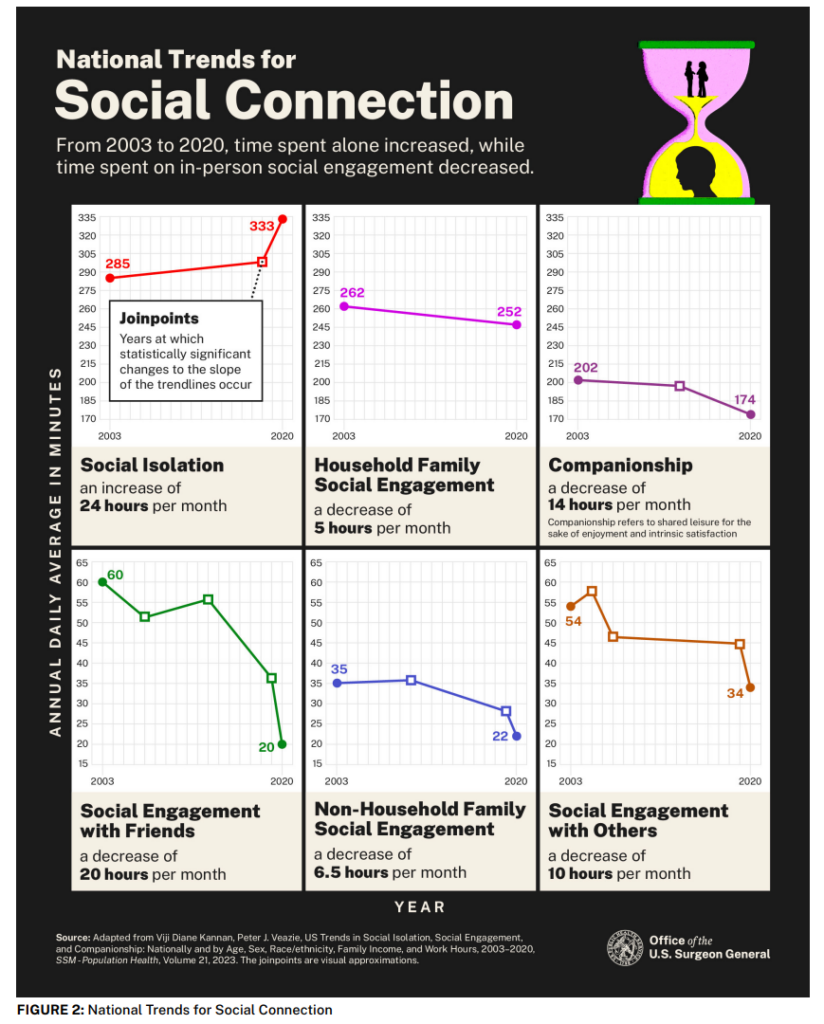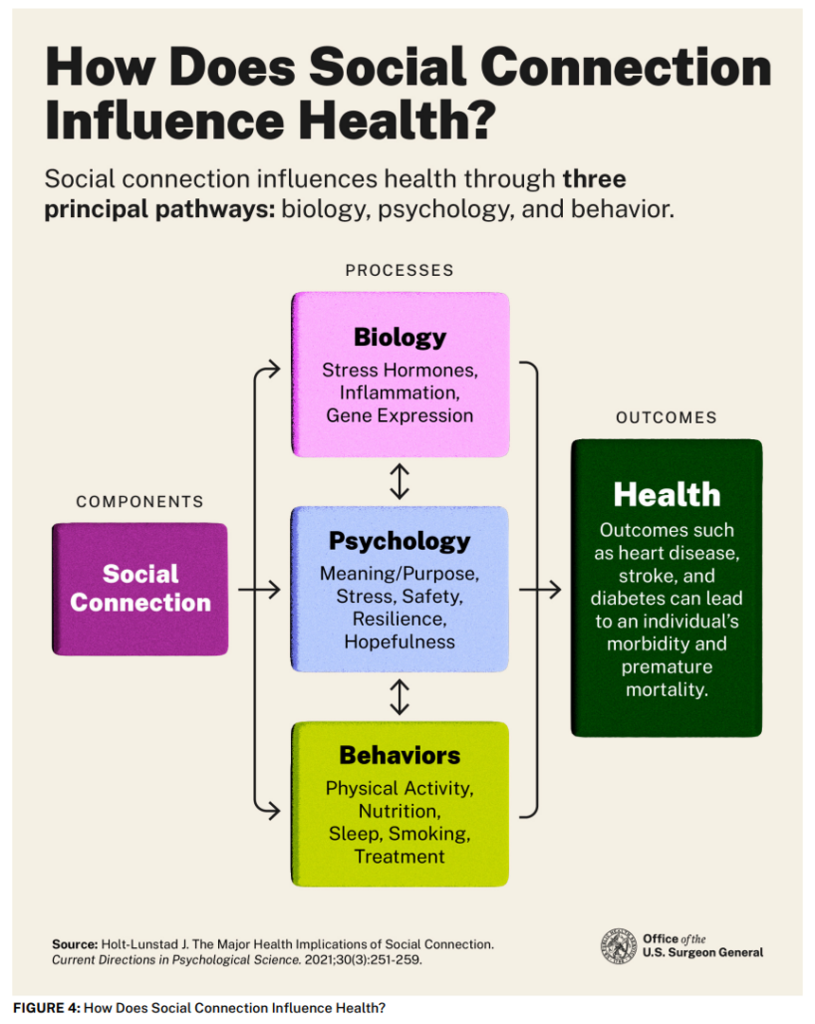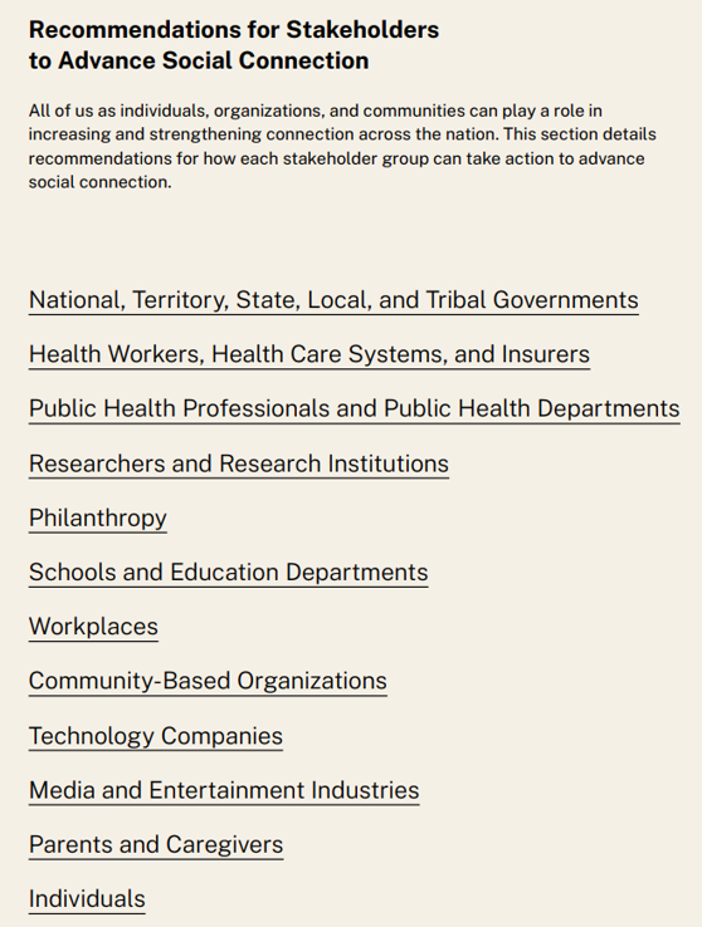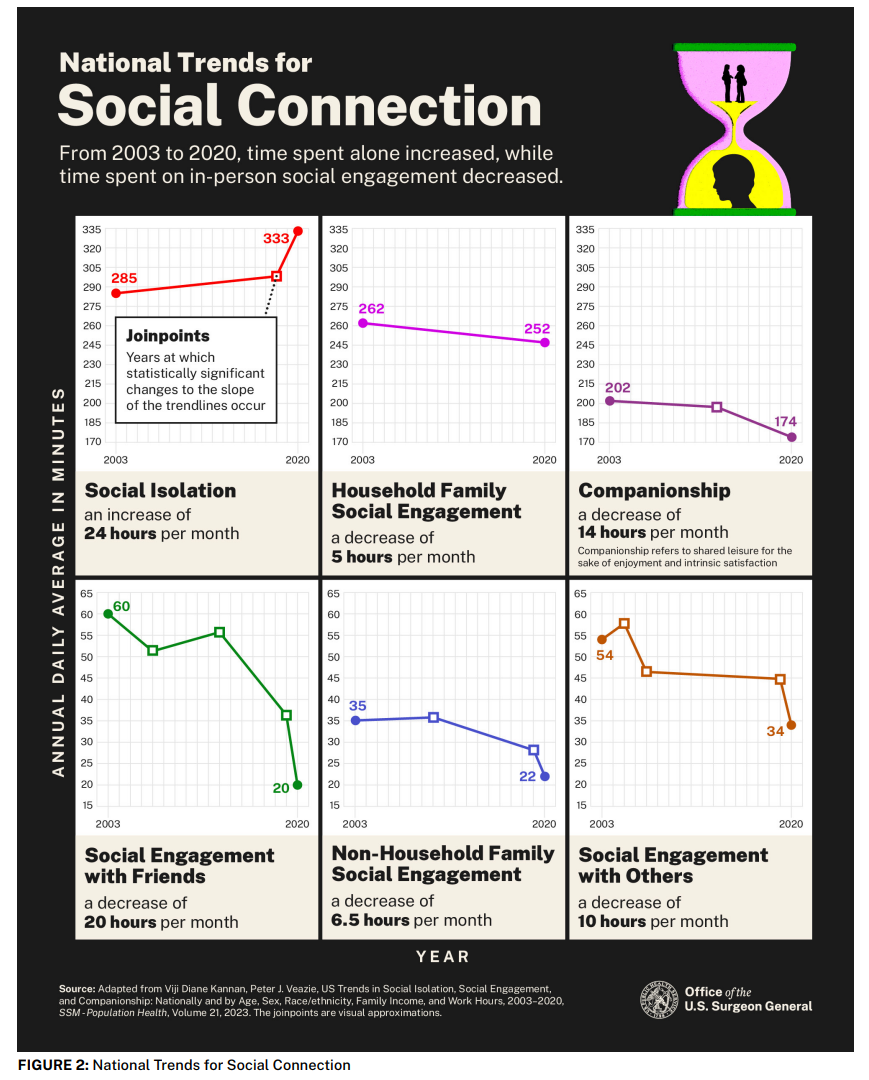This week, U.S. Surgeon General Dr. Vivek Murthy unveiled a plan to address loneliness in America.
This isn’t a theoretical thing: Dr. Murthy has come out of the loneliness closet to tell us that he, too, has confronted and dealt with to loneliness, putting himself out there/here as Exhibit A in the epidemic of Americans who are lonely — and suffering risks across every dimension of personal and social health.
The New York Times published Dr. Murthy’s op-ed on the issue in the Sunday issue in a call-to-action titled, “We have become a lonely nation. It’s time to fix that.”

This was a preface to the Department of Health and Human Services this week launching an advisory on The Healing Effects of Social Connection, a framework for U.S. stakeholders to use for addressing isolation and loneliness in America.
The first graphic quantifies six data points that together show us the current state of loneliness in America: characterized by growing social isolation, falling household family engagement, declining companionship, fast-falling social engagement with friends, and other declines in social engagement with others.
Simply put: time spent alone by Americans between 2003 and 2020 grew; time spent with others fell, in some instances like time with friends in dramatic decline downward.
The extent to which someone is socially connected depends on many factors related to structure (such as the number and variety of our relationships and interactions), function (how those relationships serve our needs), and quality (the positive/negative aspects of those relationships).
Many factors contribute to social connection, or lack thereof; these are listed in the second yellow chart, categorized by:
- Individual factors like chronic disease, mental health, and socioeconomic status
- Relationships, characterized by structure and quality, household size, and empathy
- Community issues, such as outdoor space, housing, schools, health care, and community organizations; and,
- Society, namely public policies, norms and values, technology use, civic engagement, and democratic norms, among other issues.

Social connections then influence our health across several dimensions: biological (impacting stress hormones and gene expression, along with inflammation); psychology (in terms of our meaning and purpose, stress, safety, resilience and hopefulness); and, our behaviors, the lifestyle choices we make for physical activity and exercise, nutrition and food choices, our sleep, tobacco use, and other actions we take on a daily basis.
Together, these social connection factors shape our overall health and well-being — with medical outcomes like heart disease, stroke and diabetes key risks related to these processes, the Surgeon General warns.
The advisory report puts forth six pillars to advance social connections:
- To strengthen social infrastructures in local communities through the built environment and local community programs
- To enact pro connection public policies
- To mobilize the health sector in training health care providers and expanding public health surveillance and interventions
- To reform digital environments, such as requiring data transparency and supporting pro-connection technologies that foster true social wealth
- To deepen our knowledge investing more in research and expanding public awareness of evidence-based approaches for social connections, and
- To build a culture of connection, expanding conversations in schools, workplaces, and among leaders at all levels of society.

There are many stakeholders in our communities that can work on these pillars in various ways. Dr. Murthy mentions them, and here’s a list included in the report that will help you think through where you play a role here in fostering social connections in your own networks at home, at work, and in your community.
In the conclusion of his NY Times essay, Dr. Murthy concluded by noting:
“This work will take all of us: schools, workplaces, community organizations, government, health workers, public health professionals, individuals, families and more working together. And it will be worth it because our need for human connection is like our need for food and water: essential for our survival. The joy I felt being reconnected with my friends and family is possible for our nation.”
For more on this important initiative, listen to Dr. Murthy explaining more about the challenge of loneliness and how we can re-building an infrastructure to combat and ameliorate loneliness…





 Interviewed live on BNN Bloomberg (Canada) on the market for GLP-1 drugs for weight loss and their impact on both the health care system and consumer goods and services -- notably, food, nutrition, retail health, gyms, and other sectors.
Interviewed live on BNN Bloomberg (Canada) on the market for GLP-1 drugs for weight loss and their impact on both the health care system and consumer goods and services -- notably, food, nutrition, retail health, gyms, and other sectors. Thank you, Feedspot, for
Thank you, Feedspot, for  As you may know, I have been splitting work- and living-time between the U.S. and the E.U., most recently living in and working from Brussels. In the month of September 2024, I'll be splitting time between London and other parts of the U.K., and Italy where I'll be working with clients on consumer health, self-care and home care focused on food-as-medicine, digital health, business and scenario planning for the future...
As you may know, I have been splitting work- and living-time between the U.S. and the E.U., most recently living in and working from Brussels. In the month of September 2024, I'll be splitting time between London and other parts of the U.K., and Italy where I'll be working with clients on consumer health, self-care and home care focused on food-as-medicine, digital health, business and scenario planning for the future...